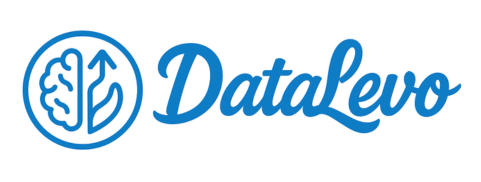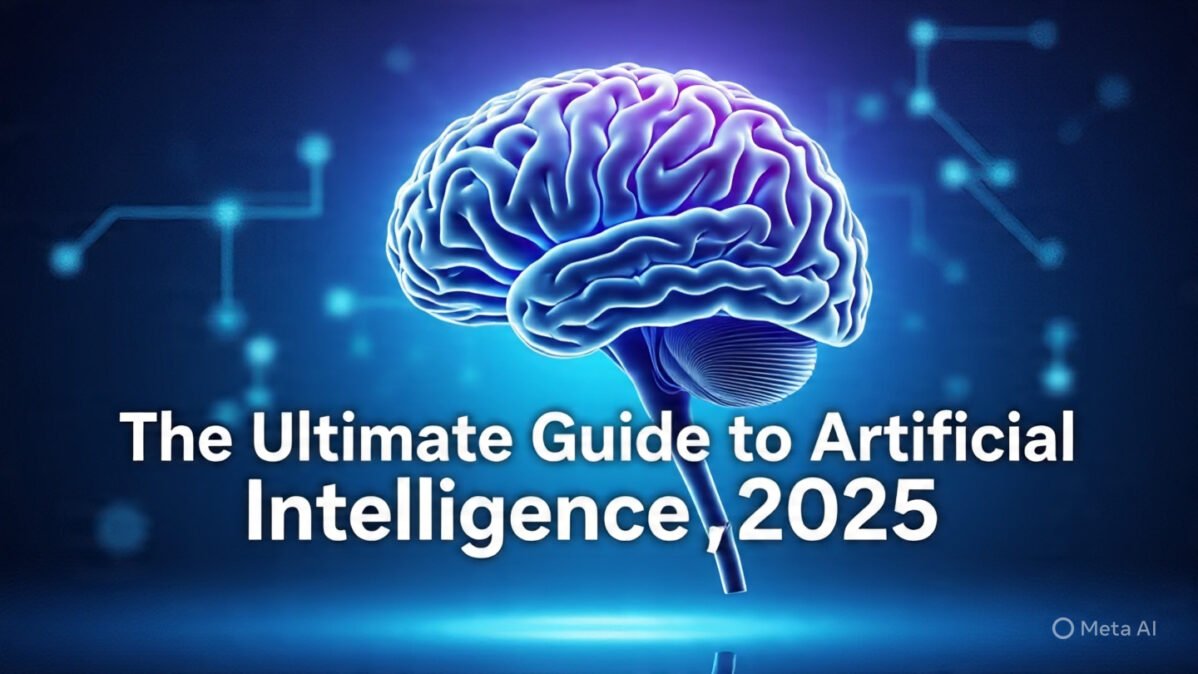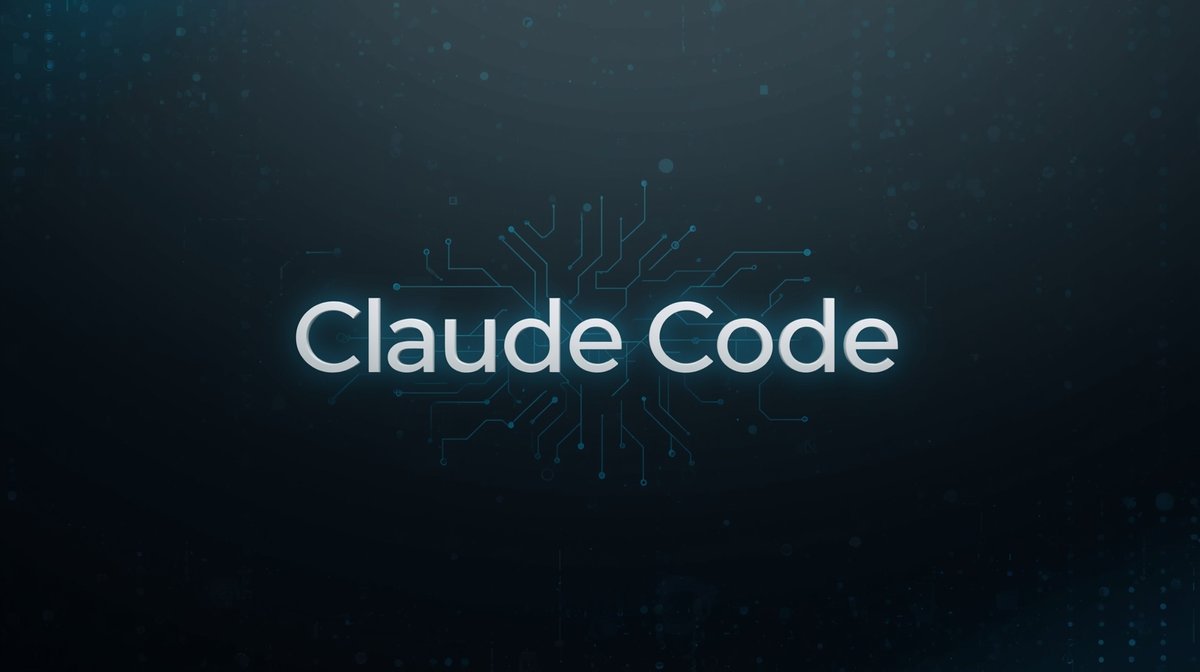Introduction
Artificial Intelligence (AI) is no longer a futuristic concept—it’s a powerful part of our everyday lives in 2025. From personalized shopping suggestions to advanced healthcare diagnostics and AI content creators like ChatGPT, AI is shaping the world faster than ever before.
But what exactly is AI? How does it work? Why is it everywhere? And more importantly—how can individuals, students, and small businesses benefit from it without needing a PhD in data science?
In this comprehensive guide, you’ll learn:
- What Artificial Intelligence really is (in simple words)
- The different types and categories of AI
- How AI works behind the scenes
- Real-world use cases across various industries
- The pros, cons, and future possibilities of AI
Whether you’re a beginner, blogger, student, or tech enthusiast, this guide is your go-to resource for understanding AI in 2025 and beyond.
Tip: Bookmark this page—it’s regularly updated with the latest AI trends, tools, and ethical debates.
 What Is Artificial Intelligence?
What Is Artificial Intelligence?
Artificial Intelligence (AI) is the ability of machines to perform tasks that typically require human intelligence, such as learning, problem-solving, and decision-making. In 2025, AI powers chatbots, healthcare diagnostics, self-driving cars, and creative tools. It works by using data, algorithms, and continuous learning to mimic human thought processes.
In simple terms, AI enables machines to “think” or act smart—just like humans—but at incredible speed and scale.
 Real-World Examples of AI:
Real-World Examples of AI:
- Chatbots (like ChatGPT, Google Gemini) that answer your questions instantly
- Facial recognition is used in phones and surveillance
- AI-powered translation apps that break language barriers
- Self-driving cars that navigate with machine vision
- Healthcare AI detecting diseases faster than doctors
Key Point: AI doesn’t mean robots only—it also includes algorithms, software tools, and cloud-based systems.
History & Evolution of Artificial Intelligence
Artificial Intelligence didn’t just appear overnight—it’s the result of decades of research, trial, error, and breakthroughs in computer science, mathematics, neuroscience, and data processing.
Understanding the evolution of AI gives you context on how far we’ve come—and where we might go next.
 Brief Timeline of AI Development
Brief Timeline of AI Development
| Year | Milestone | Description |
|---|---|---|
| 1950 | Alan Turing proposes the “Turing Test” | Can machines think like humans? This sparked the first serious questions about machine intelligence. |
| 1956 | Term “Artificial Intelligence” coined at Dartmouth Conference | Official birth of AI as a field of study. |
| 1960s–70s | Early rule-based systems | AI focused on symbolic logic, problem-solving, and chess-playing computers. |
| 1980s | Expert systems boom | AI began to be applied in business, especially for diagnostics and decision support. |
| 1997 | IBM’s Deep Blue beats world chess champion Garry Kasparov | First major AI win against human intelligence in a complex task. |
| 2012 | Deep Learning breakthrough (ImageNet) | AI could now recognize images with superhuman accuracy. Start of the deep learning era. |
| 2018–2020 | Rise of large language models | Tools like BERT and GPT-2 revolutionized natural language understanding. |
| 2022–2024 | Multimodal AI & Generative AI boom | ChatGPT, Midjourney, DALL·E, Sora—AI now writes, codes, designs, and creates videos. |
| 2025 | Ethical AI, regulation, and AGI debates intensify | Global focus shifts to safe and responsible AI as capabilities rapidly grow. |
 Why This History Matters
Why This History Matters
AI’s journey reveals two things:
- Progress has been exponential—from basic rule systems to creative, emotional, and autonomous AI.
- Each major leap (chess, image recognition, language models) redefines what we thought only humans could do.
Pro Tip: Want to see where we’re going next? Look at how AI is evolving from reactive tools to proactive decision-makers—a shift toward true Artificial General Intelligence (AGI).
 Fun Fact:
Fun Fact:
Alan Turing once asked: “Can machines think?”
Today, machines don’t just think—they write, draw, predict, drive, and even teach.
Types of Artificial Intelligence
Not all AI systems are created equal. In fact, Artificial Intelligence exists on a spectrum of capabilities—from simple rule-based automation to futuristic, self-aware superintelligence.
Understanding the types of AI helps you identify how advanced a system is and what it’s capable of.
 AI is Classified in Two Main Ways:
AI is Classified in Two Main Ways:
 Based on Capabilities (Most Common Classification)
Based on Capabilities (Most Common Classification)
 1. Narrow AI (ANI – Artificial Narrow Intelligence)
1. Narrow AI (ANI – Artificial Narrow Intelligence)
Also called Weak AI, this is the most common form of AI today. It is designed to perform a specific task.
Examples:
- ChatGPT (text generation)
- Google Maps (navigation)
- Spotify Recommendations
- Face ID in smartphones
Limitations: It can’t do anything outside its training scope. ChatGPT can’t drive a car; Tesla Autopilot can’t write blog posts.
 2. General AI (AGI – Artificial General Intelligence)
2. General AI (AGI – Artificial General Intelligence)
AGI refers to an AI system that has human-like cognitive abilities: it can learn, reason, and apply knowledge across different tasks.
AGI Example (hypothetical):
A system that can ace exams, write novels, fix bugs, run companies, and manage your health—without retraining.
Status: Not achieved yet. AGI is still a goal, though major AI labs are racing toward it.
UNCTAD projected the AI market to reach $4.8 trillion by 2033. Thats shows a huge change in AI Industry.
 3. Super AI (ASI – Artificial Super Intelligence)
3. Super AI (ASI – Artificial Super Intelligence)
This is the most theoretical and futuristic level of AI—machines becoming smarter than the best human minds in every field, including creativity, decision-making, and emotional intelligence.
Example:
Think of an AI system that can independently develop better AI, cure diseases instantly, and negotiate peace between countries.
Status: Purely speculative. This is often discussed in relation to existential AI risks.
 Based on Functional Capabilities
Based on Functional Capabilities
 1. Reactive Machines
1. Reactive Machines
- No memory, reacts to specific inputs
- Example: IBM’s Deep Blue chess program
 2. Limited Memory
2. Limited Memory
- Can look at past data temporarily
- Example: Self-driving cars
 3. Theory of Mind (In progress)
3. Theory of Mind (In progress)
- AI that understands emotions, intentions, social interactions
 4. Self-aware AI (Not yet possible)
4. Self-aware AI (Not yet possible)
- AI that has consciousness and its own identity (sci-fi level)
 Summary Table:
Summary Table:
| Type | Description | Example |
|---|---|---|
| Narrow AI | Task-specific, current standard | Siri, ChatGPT |
| General AI | Human-level, multitasking | Still theoretical |
| Super AI | Smarter than all humans | Not yet achieved |
 Why This Matters
Why This Matters
When people say “AI will replace humans”, they’re usually referring to AGI or ASI—which doesn’t yet exist. Most of what we use today is narrow AI, and it works best when combined with human decision-making.
Understanding the types also helps you:
- Choose the right AI tools for your blog or business
- Stay informed on where AI is heading
- Write smarter, SEO-optimized AI content (like this!)
How Artificial Intelligence Works
Artificial Intelligence might seem like magic—but under the hood, it’s all about data, algorithms, and learning from patterns.
At its core, AI works by simulating the human decision-making process using mathematics and code. Here’s how it all comes together:
 1. Data Collection & Input
1. Data Collection & Input
Every AI system needs data—a lot of it. This data could be:
- Text (e.g., articles, social media posts)
- Images (e.g., faces, x-rays)
- Audio (e.g., speech, sounds)
- Sensor data (e.g., temperature, motion)
Example: A facial recognition AI is trained on millions of labeled face images.
 2. Algorithms & Models
2. Algorithms & Models
Once the data is collected, it’s fed into an algorithm—a set of rules or calculations that help the AI “learn” patterns from the data.
- Traditional AI uses rule-based logic (e.g., “if X happens, do Y”)
- Machine Learning (ML) allows the system to learn from experience
- Deep Learning (DL) uses layered neural networks to mimic the human brain
Example: ChatGPT uses a transformer-based deep learning model trained on billions of words.
 3. Training the Model
3. Training the Model
This is the phase where the AI system is fed data repeatedly so it can adjust and improve its outputs.
- Supervised Learning: AI learns with labeled data (e.g., “This is a cat”)
- Unsupervised Learning: AI finds patterns in unlabeled data
- Reinforcement Learning: AI learns through trial and error (used in robotics and games)
Example: A self-driving car improves by being trained on millions of driving scenarios.
 4. Making Predictions or Decisions
4. Making Predictions or Decisions
Once trained, the AI system can analyze new input data and:
- Predict outcomes
- Generate content
- Make recommendations
- Recognize images or voices
- Automate decision-making
Example: A healthcare AI can scan a new chest x-ray and predict whether signs of pneumonia are present.
 5. Feedback & Improvement (Continuous Learning)
5. Feedback & Improvement (Continuous Learning)
Modern AI systems often learn continuously from new data to improve over time. This is known as model fine-tuning or real-time learning.
Example: Netflix’s AI updates its recommendations based on what you watch daily.
 Simplified Flowchart:
Simplified Flowchart:
[Input Data]  [Algorithm]
[Algorithm]  [Training Model]
[Training Model]  [Make Predictions]
[Make Predictions]  [Feedback Loop]
[Feedback Loop]
 Real-Life Analogy:
Real-Life Analogy:
Think of AI like a child:
- Data = What it sees and hears
- Algorithm = How it learns
- Training = Schooling
- Predictions = Answering questions or making decisions
- Feedback = Teacher correcting mistakes
 Why It Matters
Why It Matters
Understanding how AI works helps you:
- Trust or question AI-generated content
- Use AI tools better (writing, images, automation)
- Develop content that explains AI to beginners (great for SEO!)
Benefits of Artificial Intelligence
Artificial Intelligence is transforming nearly every aspect of modern life—from how we work, learn, shop, and stay healthy, to how businesses operate and scale.
Whether you’re a solopreneur, a student, or a tech enterprise, the benefits of AI can no longer be ignored in 2025.
Let’s explore why AI is such a game-changer across multiple domains.
 1. Increased Efficiency and Automation
1. Increased Efficiency and Automation
AI excels at automating repetitive and time-consuming tasks—allowing humans to focus on high-level strategic work.
Examples:
- AI chatbots handling 24/7 customer support
- Email sorting and auto-responses
- Robotic Process Automation (RPA) in banks and logistics
 2. Enhanced Decision-Making
2. Enhanced Decision-Making
AI tools can analyze massive datasets in real time, delivering data-driven insights that would take humans hours or days to uncover.
Examples:
- AI-powered analytics tools (like Google Analytics Intelligence)
- Predictive analytics for marketing campaigns
- Financial AI forecasting tools
 3. Personalization at Scale
3. Personalization at Scale
AI allows businesses to personalize content, product suggestions, emails, and ads based on individual user behavior—leading to better engagement and conversions.
Examples:
- Netflix’s movie suggestions
- Amazon’s product recommendations
- AI-powered dynamic email content
 4. Better Customer Experience
4. Better Customer Experience
AI-powered tools like chatbots, recommendation engines, and virtual assistants drastically improve how users interact with websites, services, and apps.
Examples:
- ChatGPT-based customer support bots
- Voice assistants like Siri and Google Assistant
- AI in mobile apps (e.g., Duolingo’s AI tutor)
 5. Cost Reduction
5. Cost Reduction
By automating workflows, reducing manual errors, and operating 24/7 without breaks, AI systems cut down operational costs dramatically.
Examples:
- AI replacing manual invoice entry
- Automated lead generation systems
- AI-powered content generation (e.g., product descriptions)
 6. Innovation and Creativity
6. Innovation and Creativity
AI isn’t just logical—it’s creative. From generating art and music to brainstorming ad copy and blog outlines, AI tools help unlock creativity at scale.
Examples:
- MidJourney and DALL·E (image generation)
- ChatGPT for blog ideas and scripts
- AI-powered video generation (like Sora by OpenAI)
 7. Accessibility and Inclusion
7. Accessibility and Inclusion
AI helps break down barriers for people with disabilities, different languages, and learning styles.
Examples:
- AI-powered screen readers
- Real-time speech-to-text for hearing-impaired users
- Language translation tools like DeepL or Google Translate AI
 Why These Benefits Matter
Why These Benefits Matter
Whether you’re a content creator using AI to write faster, or a healthcare provider diagnosing patients more accurately, AI offers tangible, measurable benefits that increase performance and expand potential.
It’s not just about replacing jobs—it’s about augmenting human ability.
Top Free & Paid AI Tools in 2025
As Artificial Intelligence evolves rapidly, so do the tools available to businesses, creators, and everyday users. Whether you’re looking to automate tasks, generate content, analyze data, or create art, there’s an AI tool tailored for your needs.
Here’s a curated list of the best free and paid AI tools in 2025, helping you stay ahead of the curve.
 Top Free AI Tools
Top Free AI Tools
1.ChatGPT (Free Version)
Use: Conversational AI for writing, coding help, brainstorming
Why it’s great: Easy to use, constantly updated, vast knowledge base
Limitations: Limited usage per month, no advanced fine-tuning in free tier
2. Google Colab
Use: Free cloud environment for running AI experiments and Python notebooks
Why it’s great: Access to GPUs, perfect for developers and researchers
Limitations: Requires coding knowledge
3. Canva AI
Use: Design and image generation with AI-powered suggestions
Why it’s great: User-friendly, great for social media visuals and thumbnails
Limitations: Advanced features require paid plan
4. Hugging Face Models
Use: Open-source AI models for NLP, vision, and more
Why it’s great: Community-driven, customizable, supports experimentation
Limitations: More technical; best for developers
 Top Paid AI Tools
Top Paid AI Tools
1. ChatGPT Plus
($20/month)
Use: Faster responses, priority access, GPT-4 model
Why it’s great: More reliable, better at complex tasks, ideal for creators and professionals
Best for: Content creators, customer support, developers
2. Jasper AI
Use: AI copywriting assistant for blogs, ads, emails
Why it’s great: Templates, SEO integration, easy to use
Best for: Marketers, bloggers, small businesses
3. MidJourney
Use: AI-powered image generation from text prompts
Why it’s great: Stunning artistic visuals, active community
Best for: Designers, artists, content creators
4. Sora by OpenAI
Use: AI-powered video generation tool
Why it’s great: Creates engaging videos quickly, supports multiple styles
Best for: YouTubers, social media managers, educators
5. Grammarly Premium
Use: AI-powered writing assistant and grammar checker
Why it’s great: Advanced tone detection, style improvement, plagiarism checker
Best for: Professionals, students, bloggers
 How to Choose the Right AI Tool
How to Choose the Right AI Tool
When selecting AI tools, consider:
Your needs: Writing, design, analytics, automation, etc.
Budget: Free options vs paid plans
Ease of use: No-code vs developer-friendly
Support & Updates: Active development and community help
How to Choose the Right AI Tool
When selecting AI tools, consider:
- Your needs: Writing, design, analytics, automation, etc.
- Budget: Free options vs paid plans
- Ease of use: No-code vs developer-friendly
- Support & Updates: Active development and community help
 The Future of Artificial Intelligence
The Future of Artificial Intelligence
Artificial Intelligence is evolving at an unprecedented pace, reshaping industries and our daily lives. But what does the future hold for AI beyond 2025?
Understanding AI’s trajectory will help businesses, creators, and policymakers prepare for transformative changes ahead.
 Key Trends Shaping the Future of AI
Key Trends Shaping the Future of AI
1. Advancement Toward Artificial General Intelligence (AGI)
While today’s AI excels at narrow, specialized tasks, the ultimate goal is AGI—machines that possess human-like general intelligence, capable of understanding, learning, and applying knowledge across domains without retraining.
Experts predict AGI breakthroughs within the next few decades, sparking debates around ethical control and societal impact.
2. Multimodal AI Becomes Mainstream
Future AI systems will seamlessly process and generate multiple data types simultaneously—text, images, audio, and video—enabling more natural, intuitive interactions.
Examples: AI assistants that can watch videos, analyze text, and generate responses combining both.
3. AI Ethics and Regulation Will Take Center Stage
As AI capabilities grow, so will the emphasis on ethical AI frameworks, transparency, and global regulations to prevent misuse and bias.
Governments and organizations worldwide are drafting policies focused on safe AI deployment, accountability, and human oversight.
4. AI-Powered Automation Across All Sectors
From autonomous vehicles and smart factories to AI-driven healthcare diagnostics, automation will become deeper and more pervasive, creating new efficiencies but also raising workforce transition challenges.
5. Personalized AI Assistants for Everyone
We’ll see AI evolve into highly personalized digital assistants that proactively manage schedules, health, learning, and work—blurring lines between tools and companions.
6. Integration of AI with Emerging Technologies
AI will increasingly combine with:
- Quantum computing for faster problem-solving
- 5G and edge computing for real-time AI applications
- Augmented Reality (AR) and Virtual Reality (VR) for immersive experiences
7. AI for Climate Change and Sustainability
AI will play a critical role in monitoring environmental changes, optimizing energy usage, and accelerating sustainable innovations.
 Why You Should Care About AI’s Future
Why You Should Care About AI’s Future
Keeping pace with AI’s future is crucial because it will:
- Impact job markets and required skills
- Change how businesses compete and innovate
- Influence societal norms and ethical standards
 Conclusion:
Conclusion:
Artificial Intelligence is no longer a futuristic concept—it’s a present-day force reshaping every corner of our world. From enhancing healthcare diagnostics to transforming education, automating businesses, and powering creative breakthroughs, AI’s impact is vast and undeniable.
However, alongside incredible opportunities come real challenges: ethical concerns, job market shifts, and the urgent need for responsible, transparent AI development.
By understanding AI’s history, types, workings, benefits, risks, and use cases, you’re equipped to navigate this rapidly evolving landscape with confidence. Staying informed and adopting the right AI tools can help you unlock new levels of efficiency, creativity, and innovation.
The future of AI promises even more exciting breakthroughs, but success will depend on how wisely we harness its power—balancing innovation with safety and ethics.
Faqs
1. What is Artificial Intelligence in simple terms?
Artificial Intelligence (AI) is the simulation of human-like intelligence in machines, allowing them to perform tasks such as learning, problem-solving, decision-making, and understanding natural language.
2. How is Artificial Intelligence used in everyday life?
AI powers many daily technologies, such as voice assistants, recommendation systems on streaming platforms, personalized ads, navigation apps, and smart home devices.
3. What are the main types of Artificial Intelligence?
The main types of AI include Narrow AI (specialized in specific tasks), General AI (human-like intelligence), and Artificial Superintelligence (beyond human intelligence, still theoretical).
4. What are the advantages and disadvantages of AI?
AI offers benefits like efficiency, accuracy, and automation, but also raises concerns about job loss, data privacy, and ethical risks if misused.


 Tip: Bookmark this page—it’s regularly updated with the latest AI trends, tools, and ethical debates.
Tip: Bookmark this page—it’s regularly updated with the latest AI trends, tools, and ethical debates. What Is Artificial Intelligence?
What Is Artificial Intelligence? Key Point: AI doesn’t mean robots only—it also includes algorithms, software tools, and cloud-based systems.
Key Point: AI doesn’t mean robots only—it also includes algorithms, software tools, and cloud-based systems. Brief Timeline of AI Development
Brief Timeline of AI Development Why This History Matters
Why This History Matters Fun Fact:
Fun Fact: Based on Capabilities (Most Common Classification)
Based on Capabilities (Most Common Classification) Based on Functional Capabilities
Based on Functional Capabilities Summary Table:
Summary Table: 2. Algorithms & Models
2. Algorithms & Models Example: ChatGPT uses a transformer-based deep learning model trained on billions of words.
Example: ChatGPT uses a transformer-based deep learning model trained on billions of words. 3. Training the Model
3. Training the Model 4. Making Predictions or Decisions
4. Making Predictions or Decisions 5. Feedback & Improvement (Continuous Learning)
5. Feedback & Improvement (Continuous Learning) Simplified Flowchart:
Simplified Flowchart: [Algorithm]
[Algorithm]  Top Free AI Tools
Top Free AI Tools Top Paid AI Tools
Top Paid AI Tools How to Choose the Right AI Tool
How to Choose the Right AI Tool Key Trends Shaping the Future of AI
Key Trends Shaping the Future of AI Experts predict AGI breakthroughs within the next few decades, sparking debates around ethical control and societal impact.
Experts predict AGI breakthroughs within the next few decades, sparking debates around ethical control and societal impact.
